Frequency synthesizers are widely used in the RF/microwave field, as well as in every design hierarchy of integrated circuits to rack subsystems in industrial, automotive and medical systems. Due to the wide range of RF/microwave frequency synthesizers involved, this article focuses on the latest technologies and products for modular, system-level frequency synthesizers.
This article refers to the address: http://
Frequency synthesizers can be easily categorized by analog or digital circuit type, or by type of direct or indirect frequency synthesizer. The analog indirect synthesizer stabilizes the phase of the tuned oscillator by comparing a tuned oscillator such as a voltage controlled oscillator (VCO) to a more stable frequency source such as a crystal oscillator. The analog direct synthesizer produces all possible output signals by mixing, multiplying, and dividing, and then transforms and filters the particular ideal output signal.
The output of the direct analog synthesizer is always "on" compared to an indirect analog synthesizer that requires variable oscillator tuning, and a particular signal can be selected by setting the speed of the PIN diode. Direct Digital Synthesizers (DDS) primarily use digital-to-analog converters (DACs) to convert the digital representation of an analog signal into an ideal digital output. The interval between frequency and amplitude at very fast switching frequencies is likely to be very small, depending on the bit resolution of the DAC in the DDS and the bit resolution of the phase and frequency accumulator. Although the use of DDS frequency sources improves spurious performance, analog synthesizers based on direct generation and control of signals using phase-locked loops (PLLs) may still be the most widespread form of RF/microwave frequency synthesizers.
The key parameters of the frequency synthesizer are defined according to some application-dependent performance metrics. For some synthesizers, phase noise and spurious performance may be the most important, but for other synthesizers, tuning resolution and conversion speed may be the most important. Each synthesizer model has several different key performance parameters, with price, complexity, and reliability being the other important factors for selecting a synthesizer.
For example, unlike commercial communications requiring a frequency synthesizer to cover a specified frequency, military applications require a frequency synthesizer with a wide frequency bandwidth. Wide Band Systems' frequency synthesizers are nominally used to develop electronic warfare (EW) applications that require high-speed frequency tuning and wide frequency coverage. These modular synthesizers (Figure 1) have DC power consumption of less than 18W and a conversion speed of better than 3?s at 2 to 18 GHz. These frequency synthesizers are also ideal for automated test equipment (ATE) applications that use a 14b offset binary control word for tuning. Although other tuning resolutions are available in custom designs, standard model tuning is in steps of 1 MHz. Typical single sideband (SSB) phase noise is -103 dBc/Hz at 10 kHz offset carrier, -107 dBc/Hz at offset carrier 100 kHz, and -121 dBc/Hz at offset carrier 1 MHz.
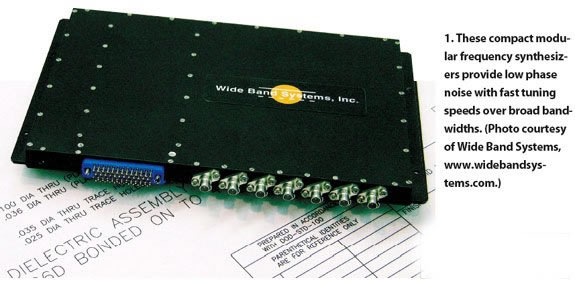
Based on the frequency reference of the internal thermostatically controlled crystal oscillator (OCXO), the frequency accuracy is 5PPM, however higher accuracy can be achieved by connecting to an appropriate external reference source. A frequency synthesizer measuring 6.5 x 6.25 x 1.050 inches provides +10 dBm output power with ±1.5 dB flatness above temperature and frequency. Its maximum spurious noise is -50 dBc and maximum harmonic noise is -20 dBc. .
Herley CTI is a long-established supplier of frequency synthesizers. In addition to the wideband synthesizer family, the company also offers BBS products for specific applications. For example, the BBS-600 models operate from 4,400 to 6,000 MHz and are ideal for C-band satellite communication systems. Other synthesizers in this series operate from 9 to 2,200 MHz and 18 to 4,400 MHz (by multiplier). Their phase noise is typically -87 to -91 dBc/Hz at a 1 GHz carrier offset of 100 Hz. This synthesizer, like the local oscillator (LO), is ideal for a wide range of communication system applications.
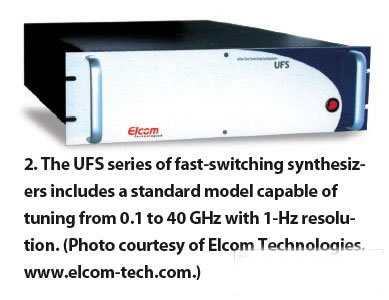
Many other frequency synthesizer suppliers, such as Advanced Control Components and Dbm, also offer standard and custom product models for many applications. Synergy Microwave's 3,150 to 5,550 MHz FSFS315555-500 surface-mount frequency synthesizer (Figure 3) is one of the smallest frequency synthesizers, with only 1.25 x 1.00 x 0.3 inches, but with phase noise at 900 MHz carrier offset of 1 kHz. -92.5 dBc/Hz, -83.5 dBc/Hz at 5.8 GHz carrier offset 1 kHz. It is tuned in steps of 5MHz with a typical spurious noise of -75dBc and a switching speed of 50 microseconds or less.
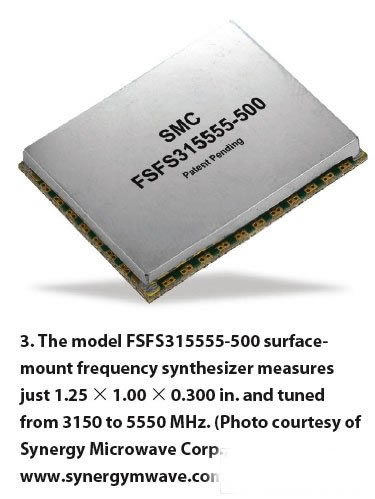
Aeroflex has high performance frequency synthesizers for the FS2000 and FS5000 series. For example, the FS2000 series includes models with operating frequencies from 1MHz to 18.4GHz and switching speeds in sub-microseconds. The FS5000 series operates from 0.3 to 26.5 GHz with 1 MHz standard resolution and 200 ns switching speed. The series delivers +10dBm output power at a flatness of ±2dB. In addition to these rack-mount devices, the company offers a 3010 PXI-type synthesizer module with 1 Hz resolution covering 1.5 to 3.0 GHz. The module has a switching speed of 250 microseconds with a typical phase noise of -116dBc/Hz at a carrier offset of 20kHz. Rodelco Electronics designs and sells custom RF/microwave synthesizers for avionics and military applications covering the 2.8 to 18.4 GHz frequency range.
ITT Microwave Systems recently introduced a WaveCor dual-ring synthesizer based on DDS technology that integrates two independent frequency sources in the same small package (Figure 4). The rack-mounted dual-ring synthesizer operates at 18 GHz with a 300 ns switching speed and uses a discrete 42b BCD interface to achieve a 1 Hz frequency resolution for each independent frequency source. Its output power is greater than +10dBm, phase noise is less than -125dBc/Hz at 9kHz carrier offset of 10kHz, and spurious performance is better than -65dBc. The phase-phase noise of the low frequency unit is -140 dBc/Hz at a 1.2 GHz carrier offset of 10 kHz.
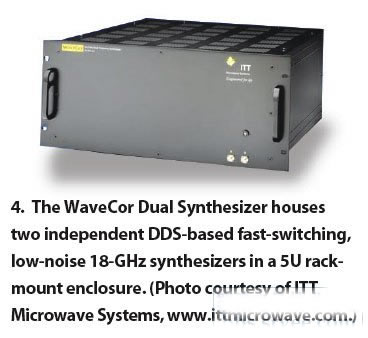
Teledyne Microwave has developed a family of single-ring synthesizers operating at 0.7 to 40 GHz (minimum 10% bandwidth) with phase noise less than -125 dBc/Hz at a carrier offset of 100 kHz. The company's low-noise 9700 series operates at over 12.8GHz with 1kHz resolution and +12dBm typical output power. Their phase noise is -120 dBc/Hz at a 3.2 GHz carrier offset of 100 kHz and -108 dBc/Hz at a 12.8 GHz carrier offset of 100 kHz.
Micro Lambda Wireless' MLSE series of wideband synthesizers cover frequencies from 2 to 20 GHz and 1 to 22 GHz with output power from +14 to +20 dBm. Utilizing the company's proven tunable YIG oscillator technology, the MLSE model has a 31ms full-band tuning speed and 1Hz resolution. Its stray performance is -60dBc, which consumes only 43W.
Endwave offers synthesizers based on YIG and VCO technologies. The YIG model operates at up to 18 GHz in single- and multi-ring configurations with a tuning range of ±1 GHz, phase noise of -100 dBc/Hz at any carrier offset of 10 kHz, and phase noise of -128 at any carrier 100 kHz offset. dBc/Hz. The company recently developed an X-band synthesizer for satellite communications applications with a tuning range of 6.410 to 7.545 GHz, which can be customized to meet the tuning step size of 1 kHz to 1 Hz. Its phase noise is -77dBc/Hz at a carrier 100Hz offset and -125dBc/Hz at a 1 MHz offset.
Phase Matrix offers instrument-type and card-format synthesizers, including the VXI Synthesizer 114XA series. They offer 1MHz resolution from 10 MHz to 20 GHz and are suitable for three VXI slots. Their output power is +10 ~ +13dBm, the harmonic noise is -30dBc, the spurious noise is -60dBc, and the phase noise is -85dBc/Hz at 10kHz offset of 10GHz.
Led Curtain Display is a creative design and upgrade version of outdoor led display& screens. this Led Strip Curtain series of products have features of light weight, energy-saving, high transparency, fast installation and easy maintenance. With advanced and top level of led diode from LightKing, PrivaLed's outdoor curtain LED displays have low power consumption and high brightness. In this ways, It is very stable and durable during lifetime.

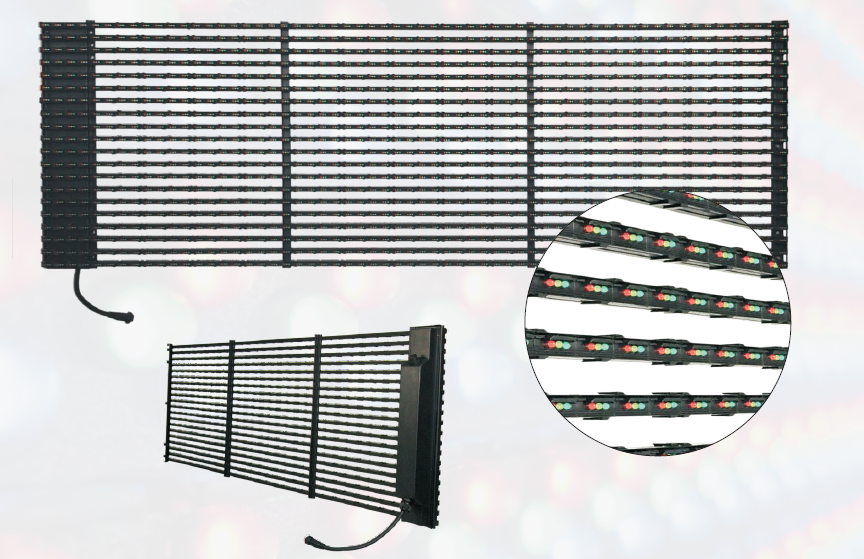
For better understanding Led curtain display main advantages,
High Water-Proof grade applied with IP65 water-proof standard, make your screen working perfectly without problems even in heavy rain.
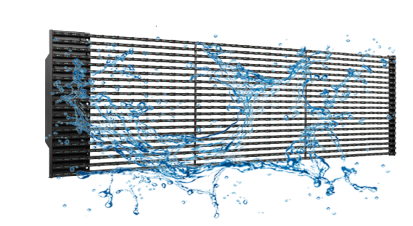
Light-weight cabinet The cabinet is about 5-8 KG per square meter, 60% less weight compared with traditional tile and have greatly reduce the load bearing pressure of the structures.
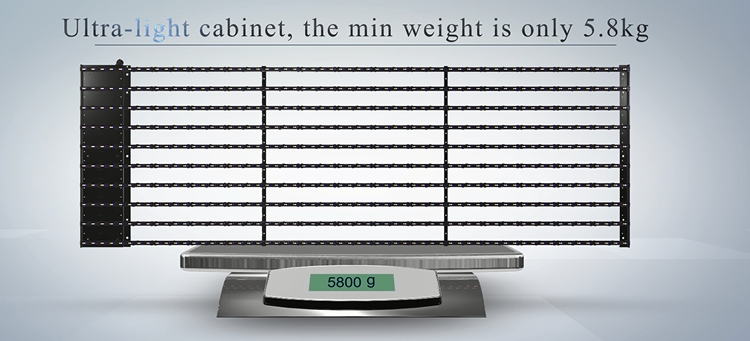
High transparency rate Louver design, make the transparency rate up to 72%, and this design greatly satisfied people`s curiosity to see outside from inside.

High brightness8000nits for P25, could be used absolutely for outdoor under strong sunshine.
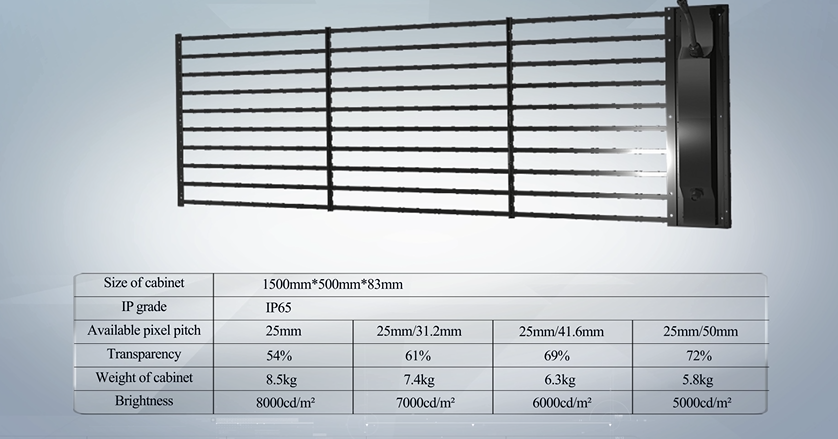
Fast & easy installation No need steel structure, Solid and simple assemble style, make installation and maintenance quick and easy. It stands firmly even in big wind.
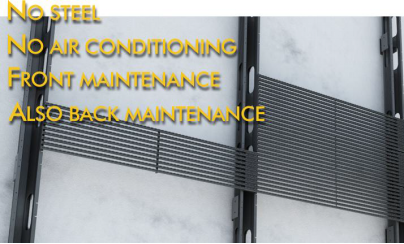
Installation Steps
Installation Steps
1 Fitting the steel structure: fitting it on the wall firmly
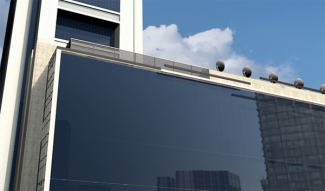
2 Attach the U-Tile frame to the structure firmly
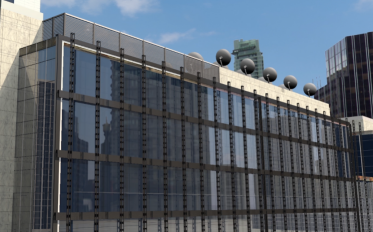
3Lock the frame on the structure by screws

4Hanging the upper right hooks of the cabinet to the card slot of the right U-tile Frame.
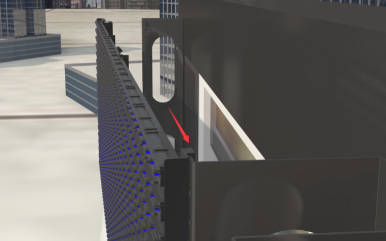
5
Buckle the left position pins of the cabinet to the location holes of the left side of the U-tile frame
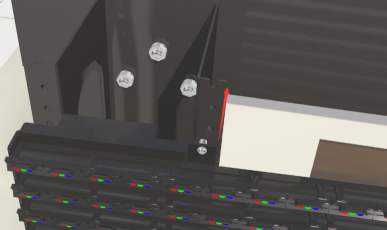
6 Aim at the screw holes for the front service installation, fitting 6 screws on the U-tile frame through the cabinet from the front.
(This is a procedure of front service, this cabinet support also available for back maintenance)
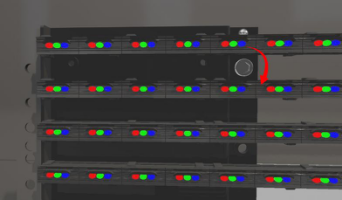
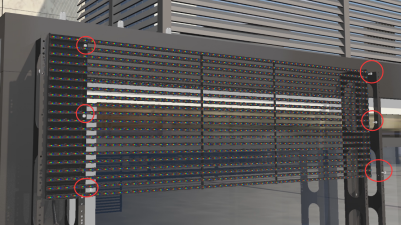
7 Then finished installation for one cabinet. The same as the next cabinet.
8 Cable Connection.
Connect the male-plug (with cable) of the next cabinet to the female-plug of its upper cabinet firmly.
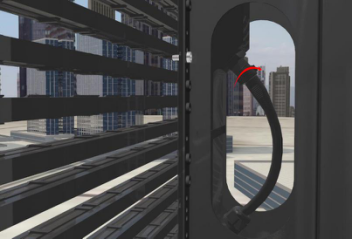
9 Using the same mode to finish the rest connection (five-pins cable), then the installation work for a complete LED display is finished.
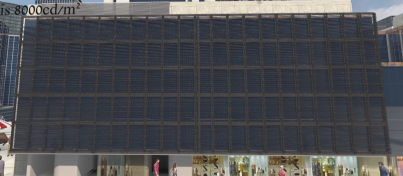
After-sale maintenance
1 The cabinet support single trip maintenance. If there any bad LED lamp or damage on single strip, you can remove the strip separately without take out the cabinet and control box.
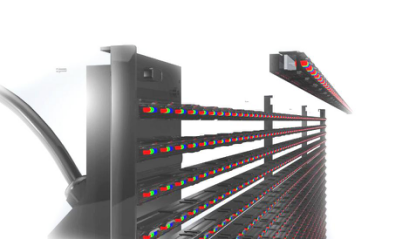
2, Cabinet support front & back installation and maintenance. If there any problem on single cabinet, you can remove the cabinet from the front & back of the screen.
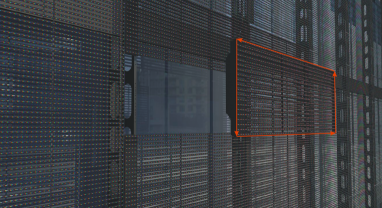
3 ,If there damages on the control box, you need remove the cabinet and open the cover of the power supply box to do repair & exchange work.
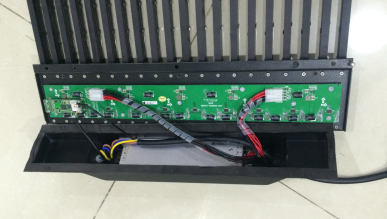
Cabinet size:

Package: Wooden case 1 for 10 led strip curtain cabinets.
Package size:

This outdoor LED Strip curtain display series product are widely used for building facade, behind of glass wall, in front of glass wall, led billboard& signs and on top of building.
Welcome to visit our factory in Nansha Guangzhou China. Please contact us for any questions or inquiries!
Led curtain display Parameter
Model number
Pixel pitch
Pixel configuration
Size of block module
Resolution of module
Density
Cabinet material
Size of cabinet(l*h*t)
Weight of cabinet
Driving method
Best viewing angle
Max power consumption
Colors
Gray scale
Color temperature
Control method
Driving device
Frame frequency
Refresh frequency
Brightness
Working voltage
Working temperature
Out-of control point
Brightness Control
IP grade
Mtbf
Transparency
LED Curtain Display
Led Curtain Display,Outdoor Led Curtain For Building,Led Curtain Wall Display,Led Strip Curtain
Shenzhen Priva Tech Co., Ltd. , https://www.privaled.com
